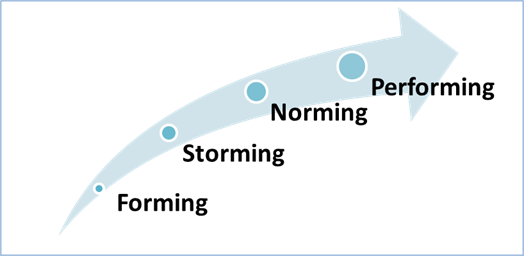One of the critical but easily overlooked tasks in a Six Sigma Project is Team Management. Team management is nothing but a set of activities like:
- Team selection/Formation
- Team Performance management
Team Selection/Formation
This is the first and foremost activity after a Six Sigma project is initiated. The Project leader has the sole responsibility to select the right team members and utilize their skills effectively for the project.
Below are some quick tips to consider during team selection:
- The team should be a well-represented team. It should have an SME or Process expert, an MIS person who can collect required data, a person strong on Six Sigma Concepts – who can help in analysis of data and an innovative mind to provide creative solutions. Based on the project needs, the team also can have a person from Quality team and a person from upstream and downstream processes. Above all, the process owner should compulsorily be involved in the project.
- Even though the role of each team member in the project is different, they all need to be trained on the basic concepts of Six Sigma, for them to clearly understand the goal and work towards it.
- The Team leader should identify the skills required, the roles that are mandatory and the time that they should spend on the project. Based on this, the list of people should be identified and shortlisted. Then the interest of the shortlisted persons and their supervisor’s consent should be officially sought.
- Once the Team members are selected they should be briefed about their role and the expected contribution in terms of knowledge, skills, time required etc.
Any Team regardless of whether it is permanent or temporary, for Six Sigma or software development, will undergo the following stages before they enter into a productive stage:
Forming: A stage where the team members (behave more like individuals and not as a team), try to understand the goal of the project in their perspective.
Storming: A stage where the team members discuss amongst each other: expressing their opinions, mostly disagreeing with one another.
Norming: The team tends to understand the need for teamwork, and the dependencies of each person’s contribution to the final outcome.
Performing: A stage when the team really starts to work towards the goal and be productive.
Once the team starts performing, it is the role of a Project leader to effectively manage their performance.
Team Performance Management
Performance management may sound like a very easy task, but is one of the most complicated tasks because it involves dealing with humans and not machines. A lot of factors play an important role in boosting or degrading the performance of an individual and team. Some of them are:
- Support required from team members: Since Six Sigma project is all about team work, the team members would be required to work together and take the support of each other in areas like data collection, conducting trials and experiments, Analysis of test results etc. A successful leader is one who foresees any hindrances or bottlenecks before it impacts the project performance. He should ensure that the members get required support both from inside and outside of the team.
- Politics: Any organization irrespective of how professional it may be, or how big it may be is not immune to organizational politics. Politics can be constructive and beneficial at times, though it is otherwise in most cases. The team manager should provide required counseling, conduct team building exercises, develop friendly attitude towards all the team members and also provide a strict note against any activities that may hinder project performance.
- Time allocation: Project leader should ensure that the team members spend only the required hours on the project and that their role in the project does not impact their normal roles and responsibilities.
- Rewards and recognition: As and when required the team leader and management should recognize the top performers for their active contribution and reward them. Rewards could be certifications, appreciation emails or posters, monetary rewards, promotions, etc.
The key to success of a Six Sigma Project lies in proper Team selection and management. So, Team Leader and the management should pay enough attention to manage the team and keep the team members motivated.

